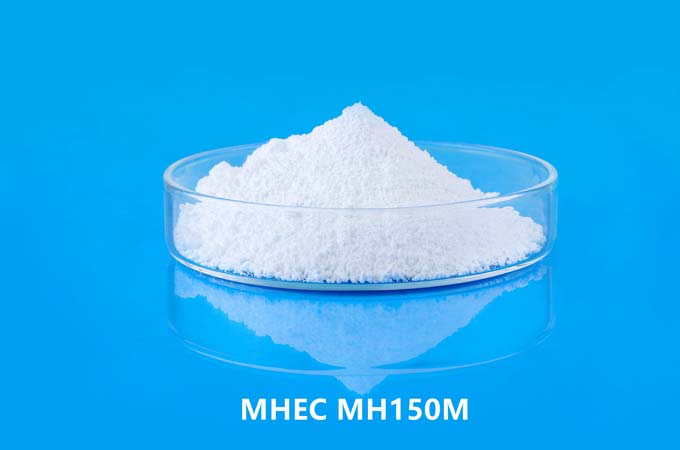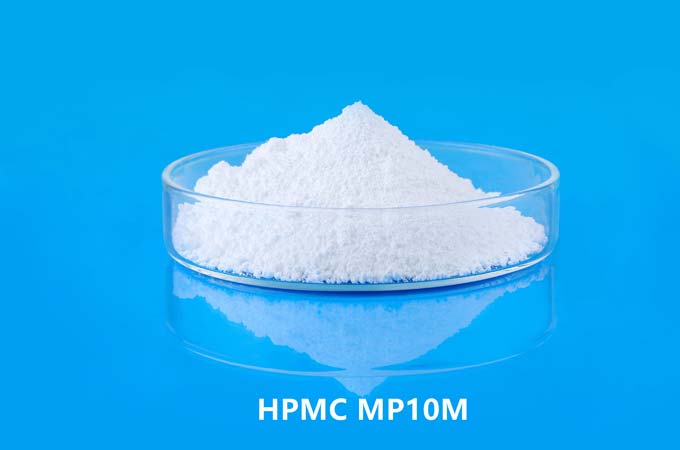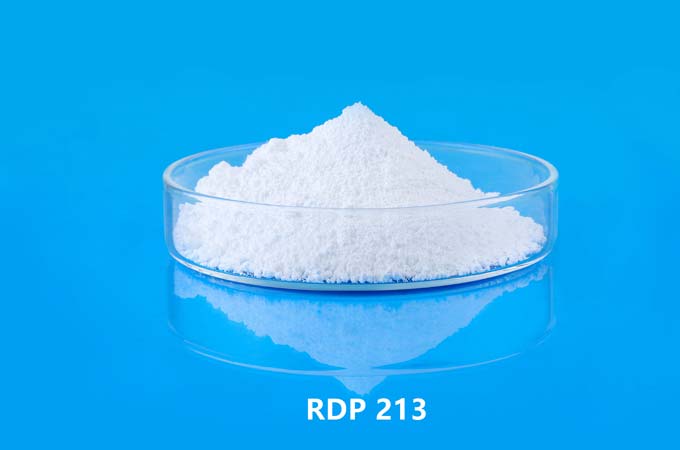Cellulose ether (Cellulose Ether) is made by drying and grinding cellulose through the etherification reaction of one or more etherifying agents. Cellulose ethers can be divided into anionic ethers, cationic ethers and nonionic ethers according to the chemical structure of the ether substituent. Ionic cellulose ethers mainly include carboxymethyl cellulose ether (CMC); non-ionic cellulose ethers mainly include methyl cellulose ether (MC), hydroxypropyl methyl cellulose ether (HPMC) and hydroxyethyl cellulose. Ether (HC). Non-ionic ethers are divided into water-soluble ethers and oil-soluble ethers. Non-ionic water-soluble ethers are mainly used in mortar products. Ionic cellulose ether is unstable in the presence of calcium ions, so it is rarely used in dry-mixed mortar products using cement and slaked lime as cementing materials. Nonionic water-soluble cellulose ethers are widely used in the building materials industry due to their suspension stability and water retention properties.
1. Chemical properties of cellulose ethers
Each cellulose ether has the basic structure of cellulose, which is an anhydroglucose structure. In the process of producing cellulose ether, cellulose fibers are first heated in an alkaline solution and then treated with an etherifying agent. The fibrous reaction product is purified and ground to form a uniform powder of a certain fineness.
Only methane chloride is used as the etherifying agent in the MC production process. In addition to methane chloride, propylene oxide is also used in the production of HPMC to obtain hydroxypropyl substituents. Various cellulose ethers have different methyl and hydroxypropyl substitution ratios, which affect the solubility and thermal gelation temperature of cellulose ether solutions.
2. Application scenarios of cellulose ethers
Cellulose ether is a nonionic semi-synthetic polymer compound that is water-soluble and solvent-based. It causes different effects in different industries. For example, in chemical building materials, it has the following compound effects:
① Water retaining agent ② Thickener ③ Leveling property ④ Film-forming property ⑤ Binder
It is used as an emulsifier and dispersant in the polyvinyl chloride industry; in the pharmaceutical industry, it is an adhesive and a slow- and controlled-release matrix material. Since cellulose has a variety of composite functions, it is the most widely used field. The following focuses on the uses and functions of cellulose ethers in various building materials.
(1) Latex paint:
In the latex paint production line, hydroxyethyl cellulose should be selected. The general specification of this viscosity is RT30000-50000CPS, which corresponds to the HBR250 specification. The reference dosage is generally around 1.5‰-2‰. The main function of hydroxyethyl in latex paint is to thicken, prevent pigments from gelling, contribute to the dispersion and stability of pigments and latex, and can increase the viscosity of components and contribute to the leveling performance of construction: Hydroxyethyl Cellulose is easy to use. It can be dissolved in both cold and hot water and is not affected by pH value. It can be used safely if the PI value is between 2 and 12. For this method, hydroxyethyl cellulose should be selected as delayed type hydroxyethyl cellulose with a dissolution time of more than 30 minutes. The steps to use are as follows: (1) A high-cut stirring container is required to quantify pure water (2) The internal force starts at a low speed Stir while adding hydroxyethyl groups evenly and slowly into the solution (3) Continue stirring until the granular materials are completely moistened (4) Add other additives and alkaline additives (5) Stir until all hydroxyethyl groups are completely dissolved and add the formula Add other components and grind to obtain the finished product. ii. Prepare mother liquor and wait: This method can choose instant type, and has the anti-fungal effect of cellulose. The advantage of this method is that it is more flexible and can be added directly to latex paint. The preparation method is the same as steps ①-④. ⅲ. For cooking porridge: Because organic solvents are poor solvents for hydroxyethyl (insoluble), these solvents can be used for cooking porridge. The most commonly used organic solvents are organic liquids in latex paint formulations, such as ethylene glycol, propylene glycol and film-forming agents (such as diethylene glycol butyl acetate), seaweed material hydroxyethyl cellulose, etc., which can be added directly to the paint. Then continue stirring until completely dissolved.
(2) Putty on interior wall:
At present, water-resistant and scrub-resistant environmentally friendly putty has basically attracted people's attention in most cities. In the past few years, because putty made from construction glue can radiate formaldehyde gas and harm people's health, construction glue is mostly made from the acetal reaction of polyvinyl alcohol and formaldehyde. Therefore, this material is gradually being eliminated by people, and the substitute of this material is cellulose ether series products. In other words, cellulose is the only material among the environmentally friendly building materials developed. Water-resistant putty is divided into two types: dry powder putty and paste putty. For these two putties, modified methylcellulose and hydroxypropyl methyl are generally selected. The viscosity specifications are generally between 3000-60000CPS. The most suitable ones are mainly The functions of cellulose in putty are water retention, bonding, lubrication, etc. Since the putty formulas of each manufacturer are different, some are gray calcium, light calcium, and white cement, and some are gypsum powder, gray calcium, and light calcium. Therefore, the specifications, viscosity, and cellulose permeability of the two formulas are also different. The general addition amount It is about 2‰-3‰. In the construction of wall putty, the wall base has a certain degree of water absorption (the water absorption rate of brick walls is 13%, and that of concrete is 3-5%). Coupled with evaporation from the outside, if the putty loses water too quickly, it will cause turtles. Cracks or pollen and other phenomena will weaken the strength of the putty. Therefore, adding cellulose ether will solve this problem. But the quality of fillers, especially calcium ash, is also extremely important. Due to the high viscosity of cellulose, the buoyancy of the putty is also enhanced, which avoids sagging during construction and makes it more comfortable and labor-saving after scraping. In the powdery putty, more cellulose ether should be added appropriately. Its production and use are more convenient. The filling materials and additives are dry powder and can be mixed evenly. The construction is also more convenient. Water is distributed on site, so you can use as much as you like.
(3) Concrete mortar:
In concrete mortar, to truly achieve ultimate strength, the cement hydration reaction must be complete. Especially in summer, concrete mortar loses water too quickly during construction, and measures to fully hydrate the curing water are used. This method wastes water resources. It is also inconvenient to operate. The key is that it is only on the surface, and the water absorption and hydration are still incomplete. Therefore, the way to solve this problem is to add eight water-retaining agent cellulose to the mortar concrete. Generally, hydroxypropylmethyl or methylcellulose is used. The viscosity specification is 20000-60000CPS, and the addition amount is 2%-3%. About 85%, the water retention rate can be increased to more than 85%. The method of use is to mix the dry powder evenly into the water in the mortar concrete.
(4) In paint plaster, bonding plaster, and caulking plaster:
With the rapid development of the construction industry, people's demand for new building materials is also increasing. Due to the enhancement of people's environmental awareness and the continuous improvement of construction efficiency, cementitious material gypsum products have developed rapidly. At present, the most common gypsum products are stucco gypsum, bonding gypsum, embedded gypsum, and tile adhesive. Stucco plaster is a high-quality interior wall and roof plastering material. The wall surface made of it is smooth and delicate, does not shed powder, is firmly bonded to the base layer, does not crack or fall off, and has fire protection function; self-adhesive Gypsum is a new type of building lightweight board adhesive. It is a bonding material made from gypsum as the base material and adding a variety of additives. It is suitable for bonding between various inorganic building wall materials. It has the characteristics of non-toxic, odorless, early strength and fast setting, and bonding. It is a supporting material for building boards and block construction; gypsum sealant is a filler for gaps between gypsum boards and a repair for walls and cracks. These gypsum products have a range of different functions. In addition to the role of gypsum and related fillers, the key issue is that the added cellulose ether additive plays a dominant role. Since gypsum powder is divided into anhydrous gypsum powder and semi-hydrated gypsum powder, different gypsum powders have different performance effects on the product. Thickening, water retention, and slow setting determine the quality of gypsum building materials. The common problem of these materials is hollowing and cracking, and the initial strength cannot reach this problem. To solve this problem, it is to choose the type of cellulose and the method of using the retarder in combination. In this regard, methyl or hydroxypropyl methyl 30000 is generally selected. ——60000CPS, dosage 1.5%——2%. Among them, the main function of cellulose is to retain water and prevent lubrication. However, in this process, it is impossible to rely on cellulose ether as a retarder, and a citric acid retarder must be added to the mixture so that the initial strength is not affected. Water retention rate generally refers to the water retention capacity
 English
English 日本語
日本語 français
français Deutsch
Deutsch Español
Español italiano
italiano русский
русский português
português العربية
العربية Türkçe
Türkçe Nederland
Nederland



